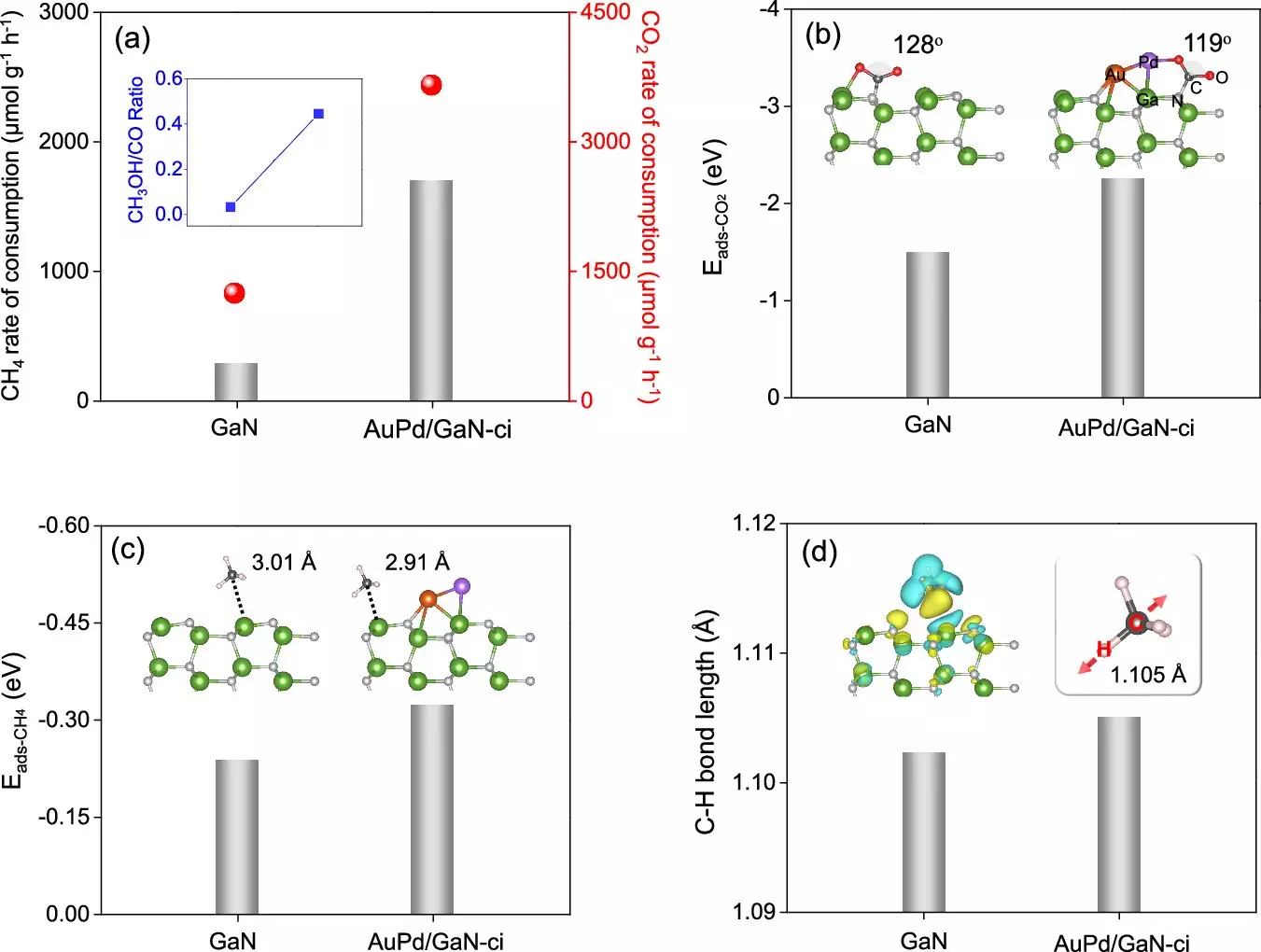Recent advances in chemical research at McGill University present a significant opportunity to address one of the planet’s most pressing challenges: climate change. A dedicated team of researchers has developed a pioneering method that utilizes sunlight to convert two notorious greenhouse gases—methane and carbon dioxide—into valuable industrial chemicals. This innovation not only has the potential to reduce harmful emissions but also offers a sustainable alternative for producing essential materials, which could revolutionize various sectors.
At the heart of this groundbreaking research is a light-driven chemical process that efficiently transforms methane and carbon dioxide into green methanol and carbon monoxide. These products are of high value in the chemical and energy sectors, potentially serving as clean fuels and crucial components in the manufacturing of plastics and batteries. The method mirrors the natural process of photosynthesis—a process that has sustained life on Earth for eons—demonstrating that insights from nature can inspire technological advances.
The innovative mechanism employs a unique catalyst comprised of gold, palladium, and gallium nitride. When exposed to sunlight, this combination initiates a reaction wherein an oxygen atom from carbon dioxide bonds with methane, leading to the production of green methanol. Essentially, this process not only generates useful products but also highlights the feasibility of extracting value from waste.
The implications of this discovery extend far beyond academic interest. By utilizing abundant sunlight as an energy source, the researchers can significantly decrease reliance on fossil fuels. This approach also requires only room temperature conditions, sidestepping the need for the high-energy processes that have historically made chemical production resource-intensive and polluting. According to senior author Chao-Jun Li, this capability aligns perfectly with Canada’s ambition to achieve net-zero emissions by 2050, transforming an environmental problem into a remarkable opportunity for innovative sustainability.
Moreover, the economic impact of this research could be profound. As industries increasingly seek greener solutions, this method not only offers a viable path for minimizing greenhouse gas emissions but also enhances the sustainability of their operations. The ability to convert waste gases into usable materials positions this research as a potential game-changer in both mitigating climate change and driving industrial growth in a more environmentally friendly direction.
As researchers like Hui Su and Jing-Tan Han explore the versatility and broaden the applications of this chemical process, the transition towards a greener economy seems increasingly achievable. This breakthrough exemplifies how scientific innovation can pave the way for sustainable practices that address both environmental and economic challenges. The marriage of advanced chemistry with renewable energy solutions exemplifies a forward-thinking approach necessary for confronting the climate crisis head-on, inspiring hope for a cleaner, more sustainable future.

